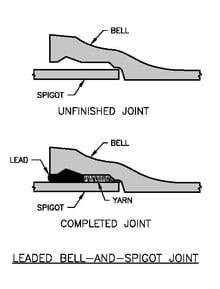SrVaro
Structural
- Oct 19, 2010
- 53
I have a partial set of drawings for a concrete structure dated 1904. Within the main structure is a cast-in-place concrete pipe (84" inner diameter), the pipe thickness is relatively consistent at top, however the bottom half has a varying thickness such that the outside face is essentially vertical. This pipe was placed first, then larger structure was formed and placed. The concrete slab (floor) of the larger structure was placed directly against the vertical side of the pipe. The two sections of concrete are not connected, ie doweled together. At the top of the construction joint all that is noted on the drawings is "to be caulked in cool weather".
I can not find any historical information of what material(s) would be used for caulking in the 1900s. Does anyone have any historical information dating back to the 1900s that could provide some insight?
Thank you.
I can not find any historical information of what material(s) would be used for caulking in the 1900s. Does anyone have any historical information dating back to the 1900s that could provide some insight?
Thank you.


